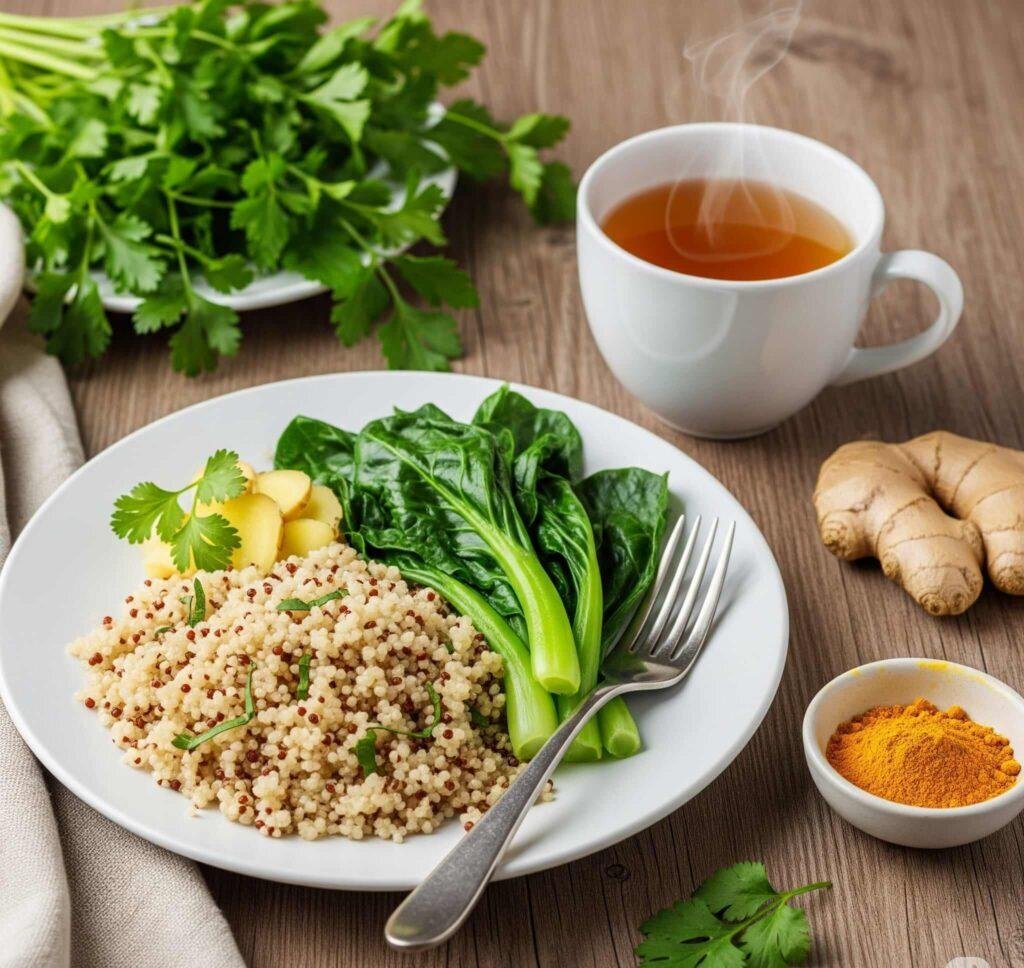
Seasonal Wellness with Ayurveda & Yoga is a balance system for staying healthy and energetic twenty-four hours a day. By aligning with your way of life and the rhythms of nature, you can peak your body, mind, and spirit wellbeing. Ayurveda, the ancient Indian science of life, and its complementary practice, yoga, offer practical means of adapting to the seasons. This is where you will learn to integrate the practices of yoga and Ayurveda into each season so that you can be optimally functioning regardless of the weather.

Understanding Seasonal Wellness with Ayurveda and Yoga
To begin with, Ayurveda teaches that our bodies are influenced by the three doshas—Vata, Pitta, and Kapha—which fluctuate with the seasons. For instance, Vata (air and ether) dominates in fall and winter, Pitta (fire and water) in summer, and Kapha (earth and water) in spring. Meanwhile, yoga complements this by offering physical and mental practices to balance these energies. As a result, adapting your diet, routines, and yoga poses to the seasons can prevent imbalances, boost immunity, and promote overall well-being.
The Science Behind Seasonal Wellness
Moreover, a 2021 study in the Journal of Ayurveda and Integrative Medicine found that Seasonal Wellness with Ayurveda & Yoga improved stress resilience by 35% in participants. Consequently, by syncing with nature, you can reduce fatigue, improve digestion, and enhance mental clarity. For example, aligning your practices with seasonal changes helps regulate your body’s natural rhythms.
Spring: Invigorating Kapha-Balancing Rituals
Renewal season is spring, but excess Kapha creates heaviness or allergies. Ayurveda and yoga assist you in letting go of the bulk of the cold weather and accessing energy.
Ayurvedic Spring Wellness Tips
- Dinet: Consume warm, light, fiery foods such as ginger tea, lentils, and greens to stimulate digestion. Oily, heavy foods to avoid.
- Daily Routine: Dry brush to stimulate circulation and cleansing. Wake up early to be in resonance with spring energy.
- Herbs: Use tulsi or turmeric externally to balance Kapha and enhance immunity.
Yoga for Spring
- Sun Salutations: Practice 5-10 rounds to feel energized.
- Twists: Twists such as Revolved Triangle cleanse and refresh.
- Pranayama: Practice Kapalabhati (breath of skull-shining) to purify the channels.

Summer: Soothing Pitta with Cooling Means
Summer sun warms Pitta and makes one irritable or inflamed. Seasonal health with Ayurveda and yoga is soothing and cooling body and mind.
Ayurvedic Summer Health Tips
- Dinet: Eat cooling foods such as cucumber, coconut water, and mint. Steer clear of fried or spicy foods.
- Lifestyle: Drink plenty of water and apply sun protection afternoons. Take moonlight walks for cooling.
- Herbs: Apply cooling herbs such as coriander or aloe vera to soothe Pitta.
Yoga Exercises in Summer
- Cooling Postures: Do Moon Salutations or Child’s Pose to unwind.
- Forward Bends: Seated Forward Fold is a yoga asana that soothes the nervous system.
- Pranayama: Do Sheetali (cooling breathing) to bring down the temperature of the body.
Fall: Earth Vata with Nourishing Habits
Fall’s dry, windy weather has a tendency to disturb Vata and cause insomnia or anxiety. Grounding and heat are integral to Yoga and Ayurveda.
Ayurvedic Fall Well Being Tips
- Diet: Eat warm, moist foods such as soups, stews, and root vegetables. Keep raw salads to a minimum.
- Daily: Massage with sesame oil (Abhyanga) moisturizes the skin and soothes Vata.
- Herbs: Ginger or Ashwagandha assists in reducing stress and aiding digestion.
Yoga Practice for Fall
- Grounding Poses: Start with Tree Pose or Warrior II to ground.
- Restorative Yoga: Utilize Supported Bridge to let go of nervous system.
- Pranayama: Utilize Nadi Shodhana (alternate nostril breathing) to ground.

Winter: Balancing Kapha and Vata with Warming Practices
Cold and wetness of winter have a tendency to raise Kapha or Vata, and therefore indolence or dryness. Ayurveda and yoga seasonal health warms you up and makes you lively.
Ayurvedic Winter Health Hints
- Diet: Choose warming, spiced foods such as oatmeal, roasted vegetables, and chai. Milk and dairy are to be avoided.
- Lifestyle: Keep active with indoor exercise and guard against normal sleeping times.
- Herbs: Triphala or cinnamon promote digestion and warmth.
Winter Yoga Practices
- Warming Sequences: Use dynamic sequences such as Vinyasa to create internal heat.
- Backbends: Poses such as Camel open the chest and charge.
- Pranayama: Bhastrika (bellows breath) creates energy.
Actionable Takeaways for Seasonal Wellness Throughout the Year
- Test Your Dosha: Take an online quiz on trusted sites such as Banyan Botanicals to identify your main dosha.
- Seasonal Calendar: Plan your diet, yoga, and routine seasonally well in advance to get ahead of the game.
- Begin with the Fundamentals: Add one Ayurvedic routine (e.g., warm lemon water) and one yoga pose to your daily life.
Track Progress: Notice how the seasons affect your mood, energy, and overall state of health.
Outbound Link: Yoga Tips for Seasonal Wellness




































